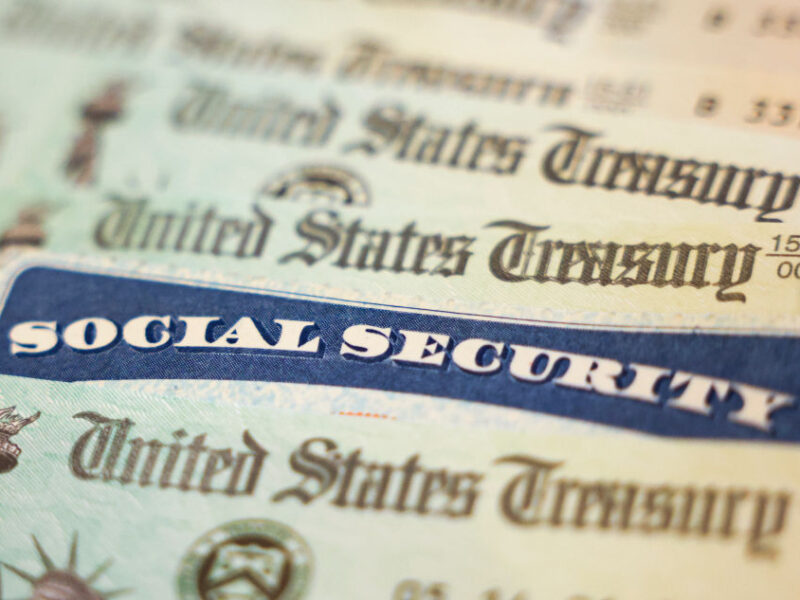What The Biden Administration’s Executive Order Means For The Crypto Industry

The White House has turned its attention toward the cryptocurrency market with the release of an executive order in response to the “dramatic growth” of digital assets.
The executive order signed by President Joe Biden earlier this month calls on the government to examine the risks and benefits of cryptocurrencies. Hagen Kim, the J. Rogers Rainey and Annie Bob Rainey associate professor of banking and finance at Texas A&M University’s Mays Business School, spoke with Texas A&M Today about how the order could impact the future of digital currency and assets and why the government is taking an interest.
What does the average person need to understand about cryptocurrency and why it continues to grow in popularity?
A cryptocurrency is a digital asset that uses highly encrypted communication protocols regarding financial transactions. The technologies behind cryptography make it very difficult to manipulate. Therefore, once people trust this technology and use cryptocurrencies, they can spend and move their wealth via the interconnected network. Related, cryptocurrencies use blockchain technology to implement decentralized networks. Blockchain is a distributed ledger, or a book of financial accounts maintained by a disparate network of various individual computers. In sum, cryptocurrency and the associated decentralized network can create a financial transaction system neither issued nor maintained by a central authority.
We use money printed by the government or assets backed by credible financial institutions and firms in economic transactions. Thus, compared to the traditional money and banking system, cryptocurrencies may be advantageous because of more affordable, more accessible, and faster money transfers and decentralized systems that are more resilient and robust to possible system failures. In addition, cryptocurrency can be less manipulated by the government or central authorities. Hence, if properly implemented and used, the cryptocurrency market can compete with the incumbent financial technologies.
However, cryptocurrency’s innovative and new aspects also expose users and investors to excessive price volatility, possible use in criminal activities, potential manipulation by major blockholders, high energy usage for crypto mining and network maintenance, and related environmental risks.
The growing popularity of cryptocurrency can be attributed to several reasons. However, one notable observation to help understand this phenomenon is that investing in cryptocurrencies is similar to investing in newly available growth stocks with high potential yet high uncertainty. As investors recognize the potential benefits of new digital assets, they start using and trading them, which reinforces the popularity and technology adoption.
President Biden’s executive order calls for the government to examine the risks and benefits of cryptocurrency assets. Why is the White House taking an interest now, and what does this signal?
Crypto assets and their markets have seen significant growth in recent years, and the United States has been one of the leading countries in this enterprise. Furthermore, due to recent severe regulatory policies (e.g., banning crypto asset mining) enforced in countries like China and Russia, the U.S. is becoming the industry’s frontrunner in technological innovation, market formation and trading.
The United States government wants to minimize the risks mentioned above without losing the leadership and benefits from this rapidly growing industry. Specifically, the executive order asks government agencies to form committees, research cryptocurrencies and work toward creating a regulatory framework for crypto-asset markets.
What are the main takeaways from the executive order that U.S. crypto users need to know?
The executive order calls for measures to mitigate risks related to the cryptocurrency market. From the experiences of the 2007-2009 financial crisis, it is well known that new financial assets can cause significant market disruptions and economic downturns unless proper laws are available and operational. In a sense, the executive order acknowledges the importance of cryptocurrency markets and associated industry.
What regulations and requirements currently govern cryptocurrency? What would be the advantages of having a regulatory framework in place?
Cryptocurrency is barely regulated at this stage. Because of the central theme of cryptocurrency being decentralized financial networks, many crypto investors worry that regulation will hurt the industry and related innovation. However, this industry is still at an infant stage, growing at an unprecedented speed with so much volatility, speculation and uncertainty. Uncertainty regarding when and how regulatory measures unravel is one of the main elements of price volatility. Therefore, the first set of regulations will focus on stating the basic rules to protect investors and consumers from fraudulent activities, help them make informed decisions and allow firms to build innovative financial platforms. If correctly done, the new policies and laws should help reduce excessive price volatility. Without a doubt, market stability is vital for the success of cryptocurrency to become a mainstream financial technology.
Notably, the order also calls for the exploration of a potential digital version of the U.S. dollar. If this were to happen, how would it change the landscape?
The executive order asks to explore a U.S. Central Bank Digital Currency (CBDC), which is a digital form of the U.S. dollar. CBDC is a centralized cryptocurrency, unlike other cryptocurrencies. The concept of centralized digital currency is not new. We constantly use domestic and international wire transfers (e.g., ACH, SWIFT). Thus, the main differences lie in the utilization of cryptography and the restrictive applications of blockchain technology.
Many countries are studying and considering launching pilot versions of their CBDC. If the U.S. starts circulating the digital dollar, this can dramatically affect how money changes hands domestically and globally. However, foreign exchange investors and users probably do not tell much difference, except for smaller fees and more prompt money transfers, because most of the changes have to do with the backend. Whether CBDC will be more centralized than the current system and whether CBDC will drive out private cryptocurrencies are open questions and require further investigation.
Media contact: Caitlin Clark, caitlinclark@tamu.edu





